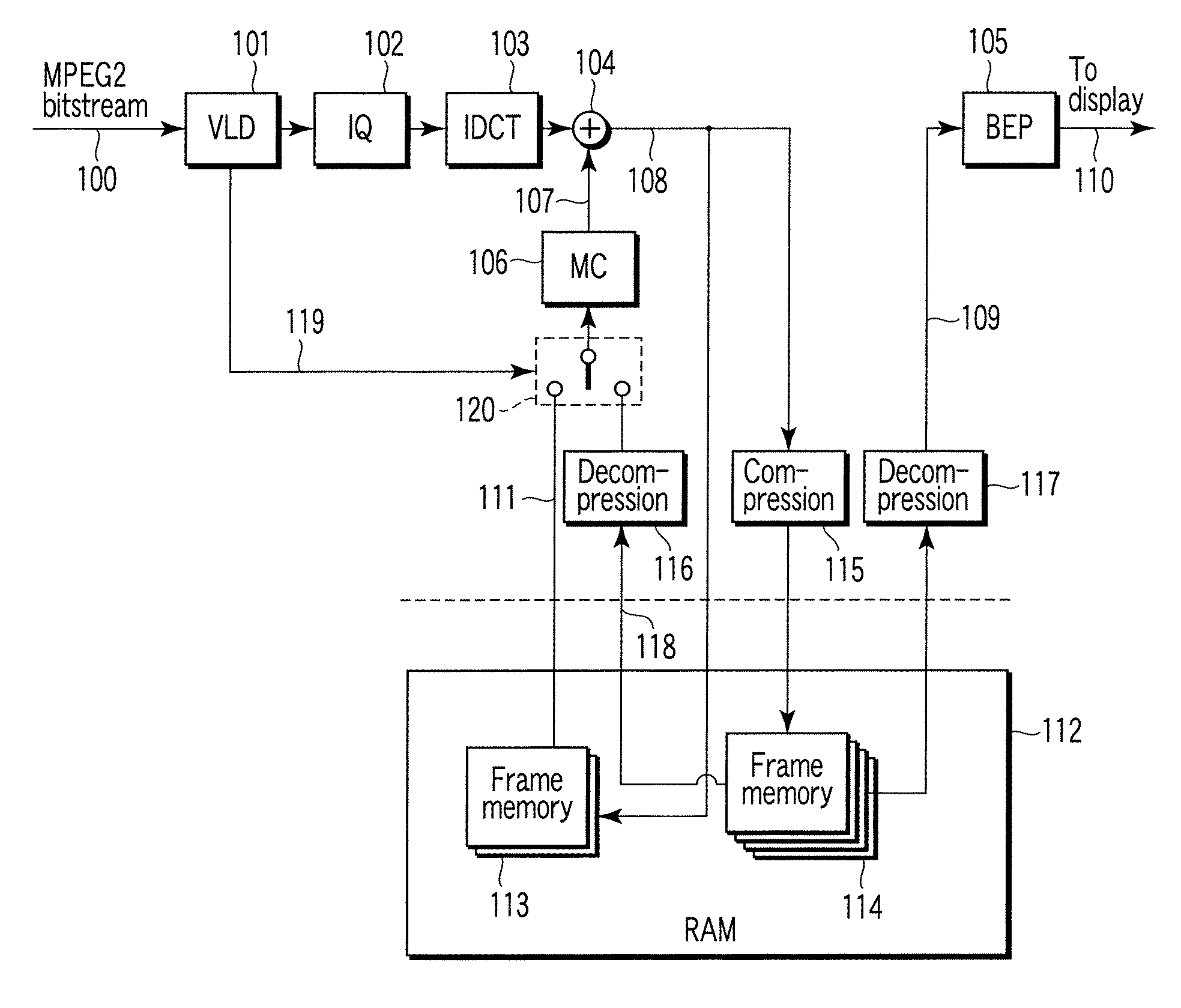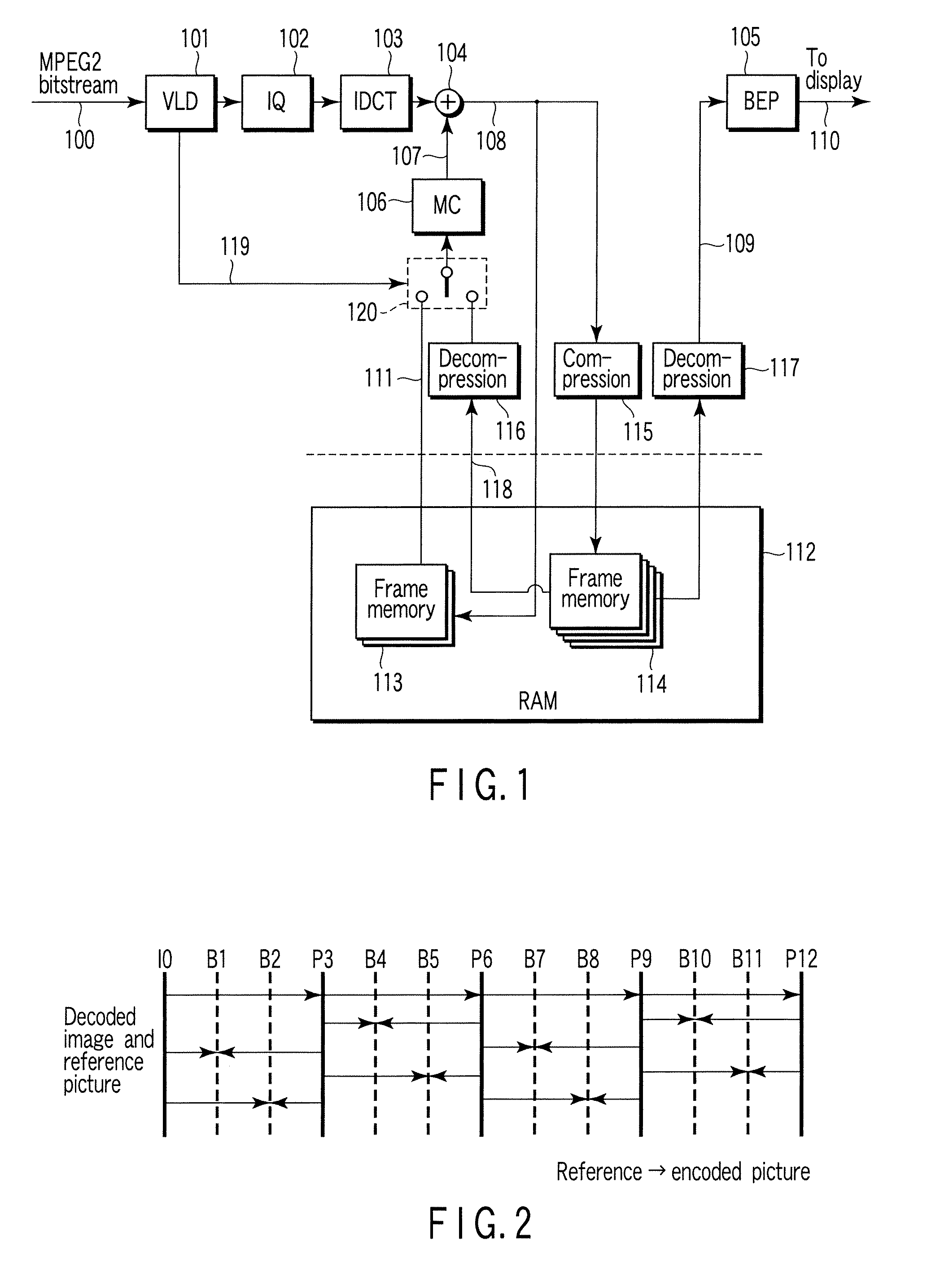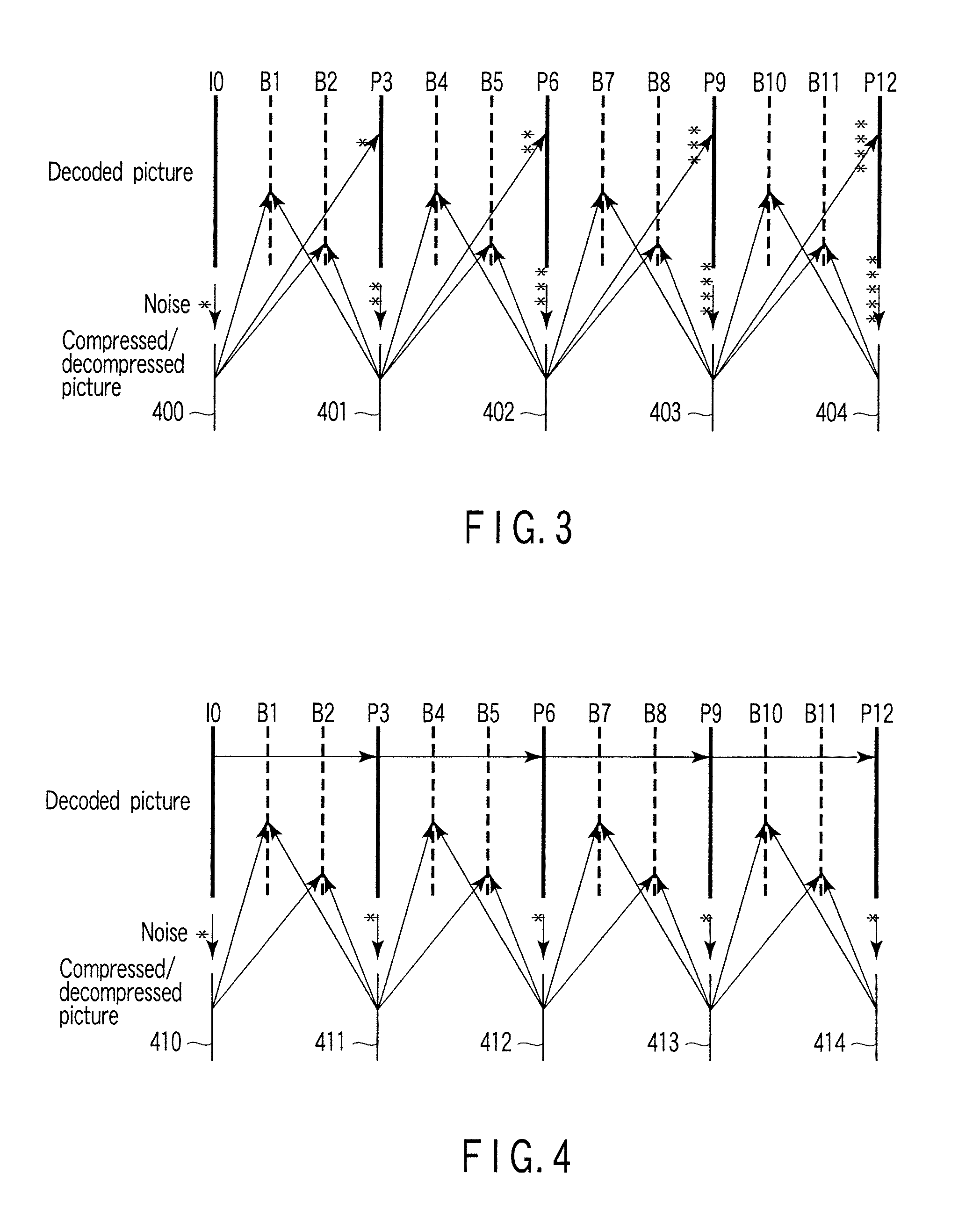Video decoding method and apparatus
a video and decoding technology, applied in the field of video decoding methods and apparatuses, can solve the problems of accumulating distortion at the time of decoding, increasing implementation costs, etc., and achieve the effect of reducing memory bandwidth
- Summary
- Abstract
- Description
- Claims
- Application Information
AI Technical Summary
Benefits of technology
Problems solved by technology
Method used
Image
Examples
first embodiment
[0036]A video decoding apparatus of the first embodiment shown in FIG. 1 is supplied with video encoded data 100 (for example, MPEG-2 bit stream) generated by encoding a moving picture by an encoding system using motion compensated prediction such as MPEG-2. The video encoded data 100 is variable-length decoded by a variable length decoder 101, that is, subjected to a process of decoding a variable-length code. The variable length decoder 101 generates a quantized orthogonal transform coefficient (for example, DCT coefficient) and encoding mode information 119.
[0037]The encoding mode information 119 includes information representing a coding type of video encoded data, namely a coding type in picture unit (an encoded picture type), a coding type in pixel block unit (for example, in macroblock unit) (an encoding macroblock type) or a prediction mode in pixel block unit. The quantized orthogonal transform coefficient is dequantized by a dequantizer 102. The dequatized orthogonal trans...
second embodiment
[0140]FIG. 22 shows a video decoding apparatus according to the second embodiment. In the first embodiment shown in FIG. 1, in order to display a decoded picture, a compressed picture signal stored in the second frame memory 114 is read and decompressed with the second decompression device 117, and then send to the back-end processor 105 to generate the reconstructed picture signal 110. In contrast, in the second embodiment, the decoded picture signal 109 is read not from the second frame memory 114 storing compressed picture signals, but from the first frame memory 113 storing non-compression decoded picture signals as shown in FIG. 22, and supplied to the back end processor 105. Therefore, the second decompression device 117 in FIG. 1 is needless.
[0141]When the non-compression decoded picture signal is input to the back-end processor 105 of a display system in this way, it is possible to display a video that the compression noise is reduced and picture quality is not almost deteri...
third embodiment
[0142]FIG. 23 shows a video decoding apparatus according to the third embodiment. As is clear from the above description, in the first and second embodiments, there is trade off between the quality of the reconstructed picture signal 110, namely, picture quality of the display picture and the reduced amount of the memory bandwidth. The third embodiment makes it possible to select adaptively the methods of the first and second embodiment.
[0143]According to FIG. 23, there is provided a switch 121 which switches between the non-compression decoded picture signal read from the first frame memory 113 and the compressed / decompressed picture signal read from the second frame memory 114 and decompressed with the second decompression device 117 and supplies them to the back-end processor 105 selectively. On the basis of such a configuration, the switch 121 may be operated so that the compressed / decompressed picture signal from the second decompression device 117 is supplied to the back-end p...
PUM
 Login to View More
Login to View More Abstract
Description
Claims
Application Information
 Login to View More
Login to View More - R&D
- Intellectual Property
- Life Sciences
- Materials
- Tech Scout
- Unparalleled Data Quality
- Higher Quality Content
- 60% Fewer Hallucinations
Browse by: Latest US Patents, China's latest patents, Technical Efficacy Thesaurus, Application Domain, Technology Topic, Popular Technical Reports.
© 2025 PatSnap. All rights reserved.Legal|Privacy policy|Modern Slavery Act Transparency Statement|Sitemap|About US| Contact US: help@patsnap.com



